There can be your advertisement
300x150
How to Store Clothes + 9 More Tips for Kids' Room Design by IKEA
Recently, a kids' room interior zone appeared in the IKEA Khimki store, which was decorated by designers Yevgenia Matveenko and Sofya Novikova. We asked the experts to tell more about how to create a cozy and functional space, choose furniture and lighting, and plan storage systems. And scroll to the end: you'll find an interesting video with instructions on organizing a kids' room.
About Choosing Furniture and Decor
Yevgenia Matveenko — designer, founder of FlatsDesign architectural bureau
How to Choose Furniture for a Kids' Room?
There is a basic set of furniture that should be in any kids' room: bed, wardrobe, table, study chair, and a sofa or armchair LIXHULT for guests. What if friends come over for sleepovers?
Always think about safety, especially for children under three years old: so that no one gets their fingers pinched or swallows a small object. Also, pay attention to eco-friendliness of materials. For example, furniture from the STUVA series is designed so that even a small child can use it easily. In addition, the sections can be assembled almost up to the ceiling — this is convenient in a small room.
What Colors to Choose?
Children like simple and light shades. Therefore, it is better to choose pastel tones. For the interior design in the video, we selected soft blue and pink colors.
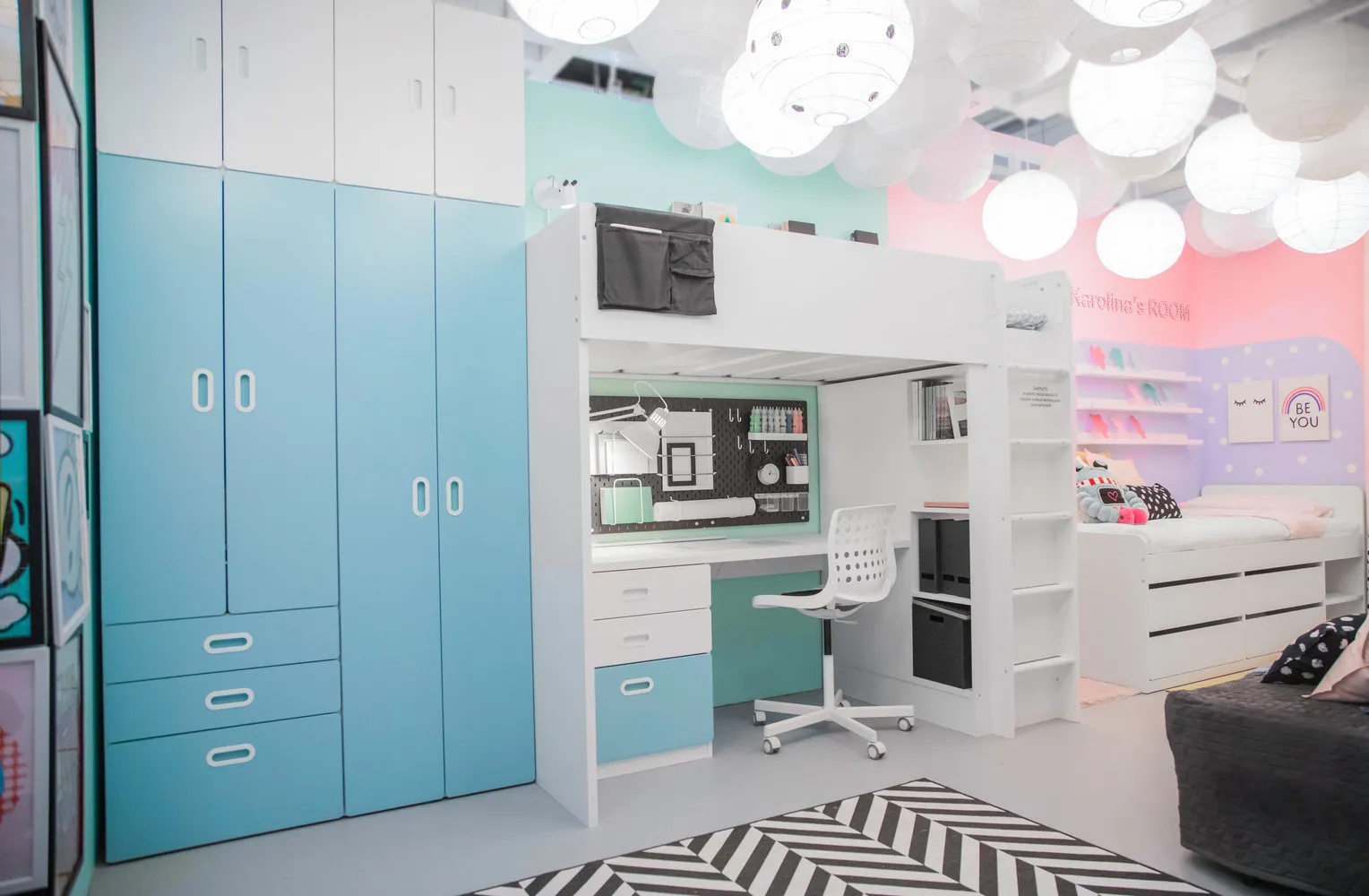
What About Textiles?
Textiles should also be made of natural materials with safe dyes. I buy IKEA children's bedding for my own kids because I don't worry about quality.
Let the textiles match your interior color scheme. You can use bedding as a bright accent. For example, white STUVA furniture and vibrant LATTÖ textile from the same line would go well together.
What to Know About Lighting?
Don't forget to provide several lighting scenarios in a kids' room:
- general light;
- for reading;
- for studying;
- for playing;
- for bedtime.
Pay attention to how your child reads: some like to read lying on their stomach, others half-sitting. Some write with the left hand, so the light should fall from the right, and vice versa if they use their right hand — then it should be on the left.
Pay attention to the safety of products: there are no sharp edges, small parts, hot surfaces, holes, or hooks in the KROKUS lamps. Don't forget to mount lamp cords to the wall.
Another important point: a study desk should be placed next to the window with the most natural light. An example of a convenient desk for school-age children is the MICKE, and for younger kids — the PÅL.
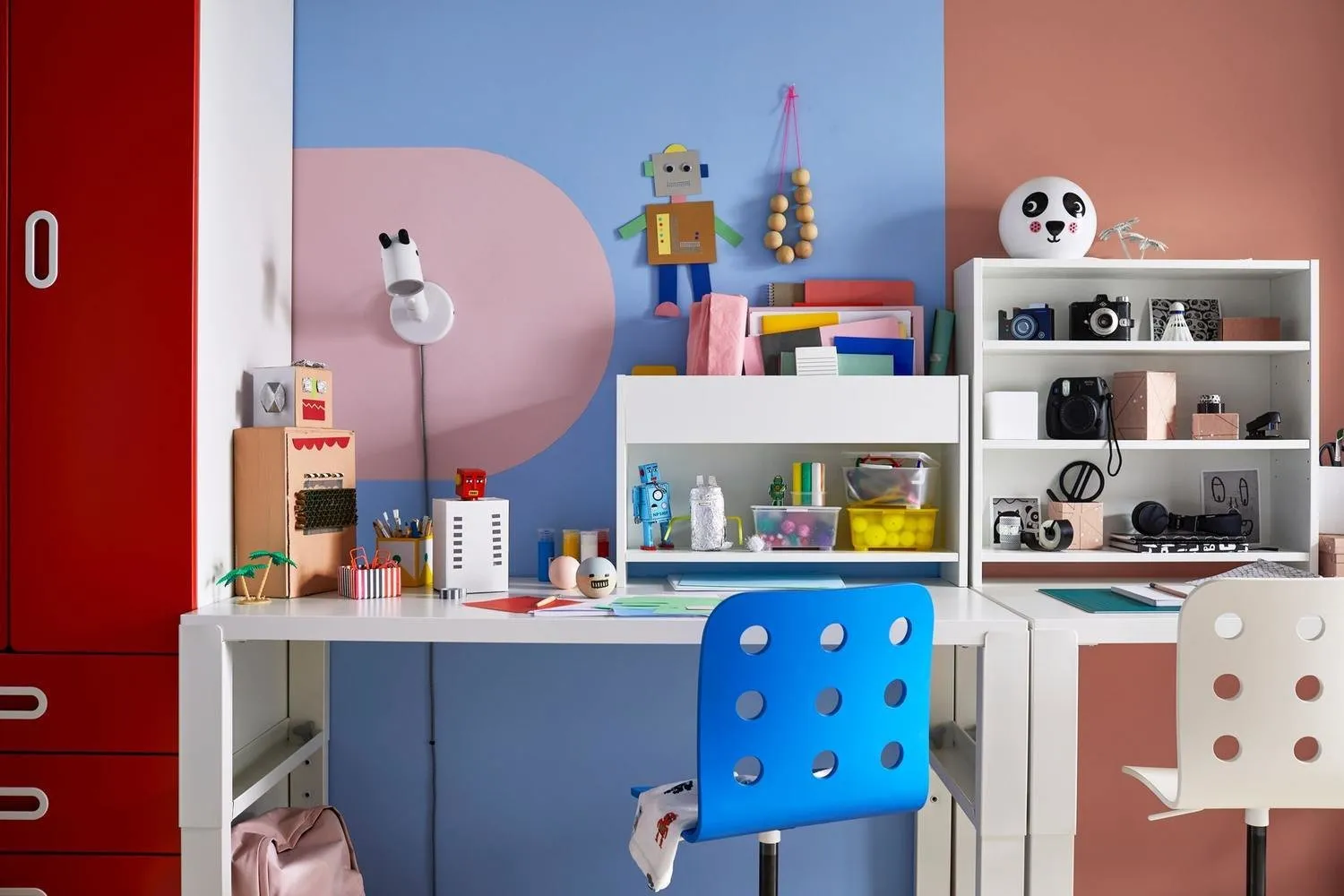
How to Choose Decor?
Think about what your child is interested in. You can organize a display wall using IKEA RIBBA or FIXBUR frames and give the child the opportunity to fill them in themselves.
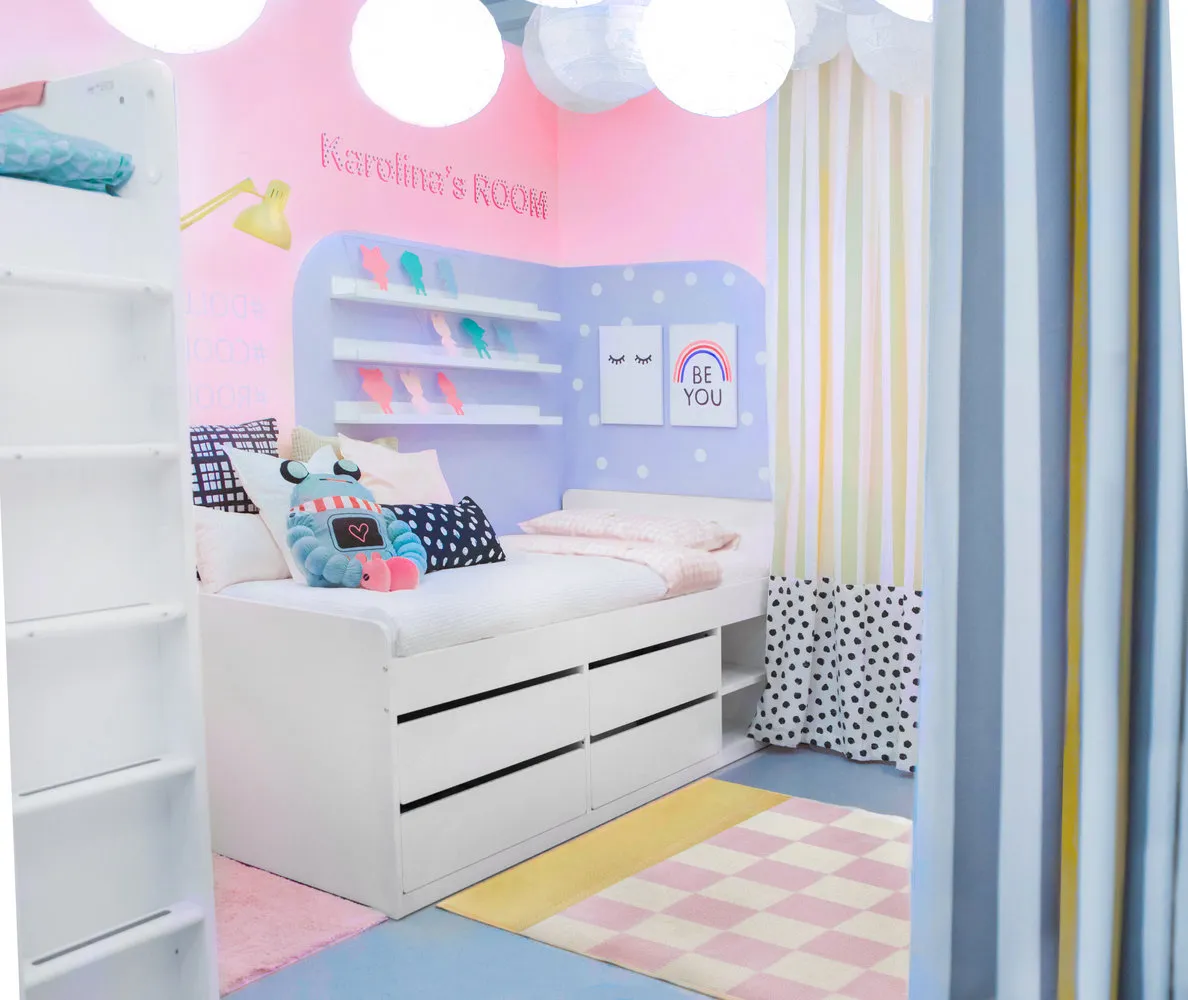
About Storage Systems
Sofya Novikova — expert, designer at IKEA Khimki store
How to Store Clothes in a Kids' Room?
- Capacity and Functionality. Consider the child's age and lifestyle. For a small child, a small dresser or space in the parents' wardrobe is enough. But for storing items of a school-age child, it’s better to allocate more space — not just for clothes but also for hobbies (swimming, gymnastics, rock climbing, dancing).
- Convenience of Storage. If you find a storage system that works for you, it will be easier to maintain order in the room. Besides, a child will learn independence faster: it’s just easier for them to put things away.
- Multi-functionality. Choose solutions that can be easily changed. For example, the modular STUVA storage system can grow with the child, and the room can be easily transformed. It’s not necessary to buy all furniture in advance; you can gradually change the space — all modules blend well together.
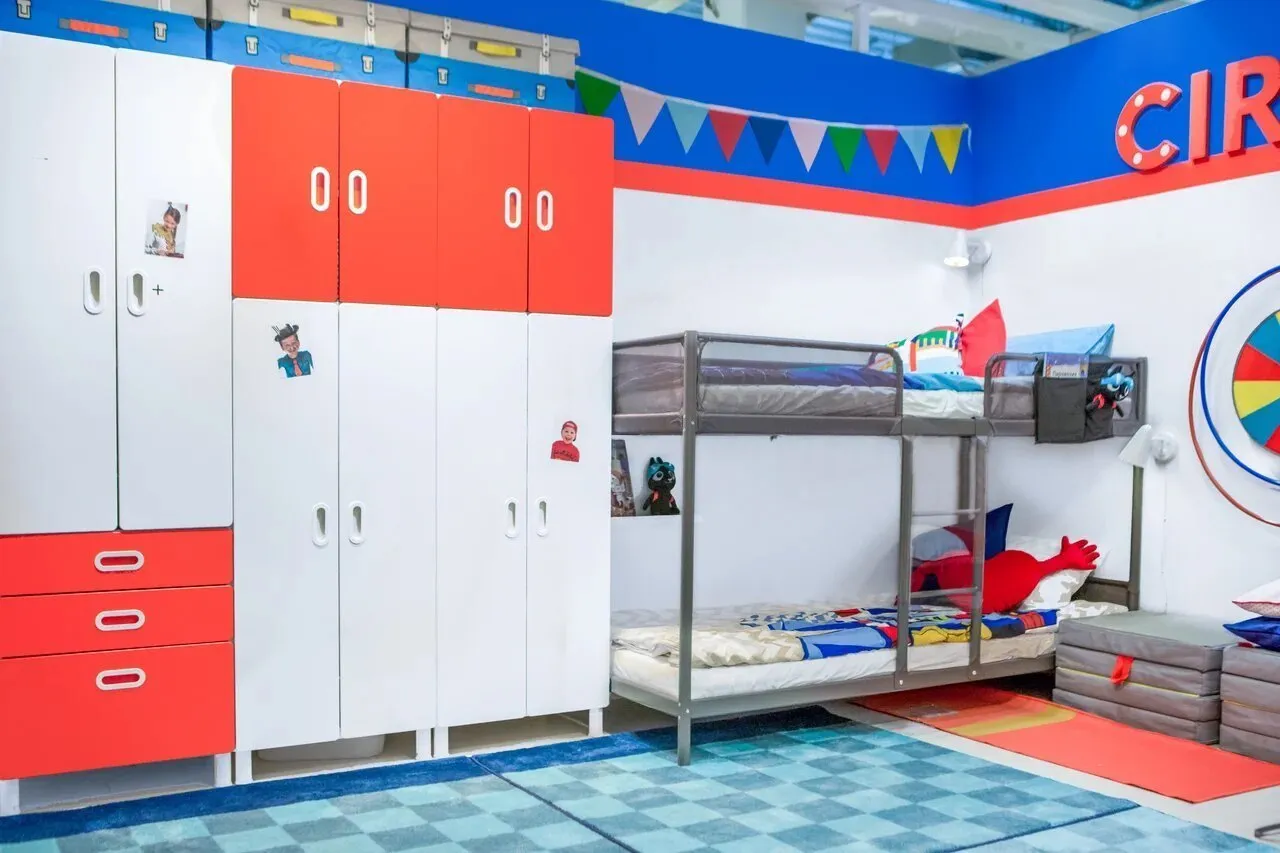
Where to Put Large Items?
There are at least two ways: hide them or show them. For the first, use space near a tall wardrobe. Here you can store tall and narrow items like skis in a case or snowboard (try hanging them on hooks or limiting with consoles). You can also use smart furniture: for example, a MALM bed with a lifting mechanism.
Try using the space above the ceiling or over wardrobes. To prevent dust on items stored there, place them in containers that fit the size and label them clearly so you don’t forget what’s inside.
Alternatively, you can store large items on display. If you have a balcony, use it too, but don’t clutter it. It’s handy to use BRANDBY hooks: hang a bicycle and free up floor space. Skis can also be placed on ceiling-mounted hooks — until it’s time for them, they won’t bother anyone. For skateboards or snowboards, you can attach console shelves EKBIE or SCREW hooks.
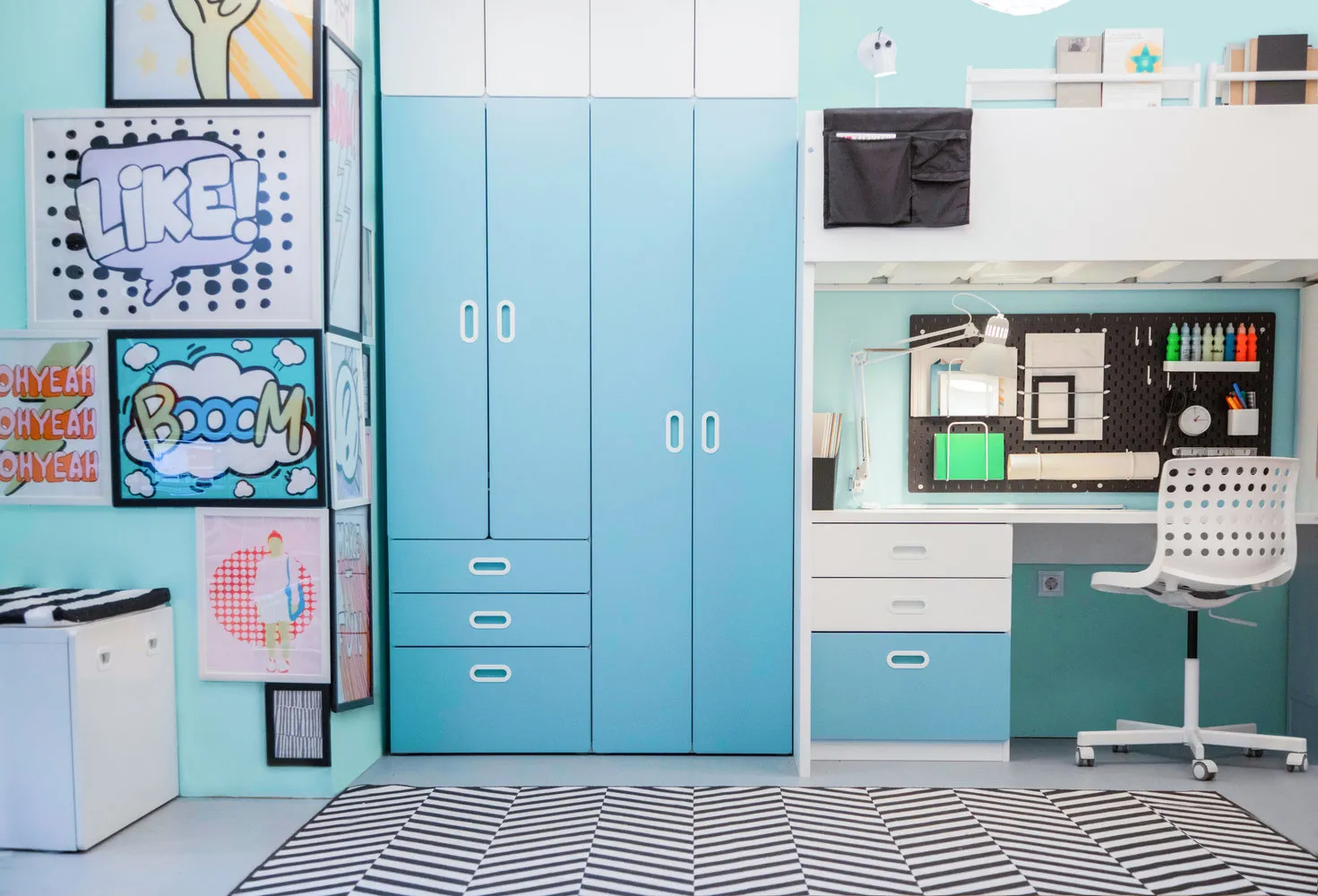
How and Where to Store Toys?
Toys usually take up the most space. It's important that it’s easy for a child to tidy them up themselves. It’s best to use containers — on wheels, transparent, with lids, such as VESSEL, so you can see what’s inside.
You can use the space under the bed: toy baskets and TRUFAST containers are ideal for storing construction sets. If children collect dolls, cars, or transformers and won’t give them up, you can organize vertical storage with narrow shallow shelves MÖSSLENDA.
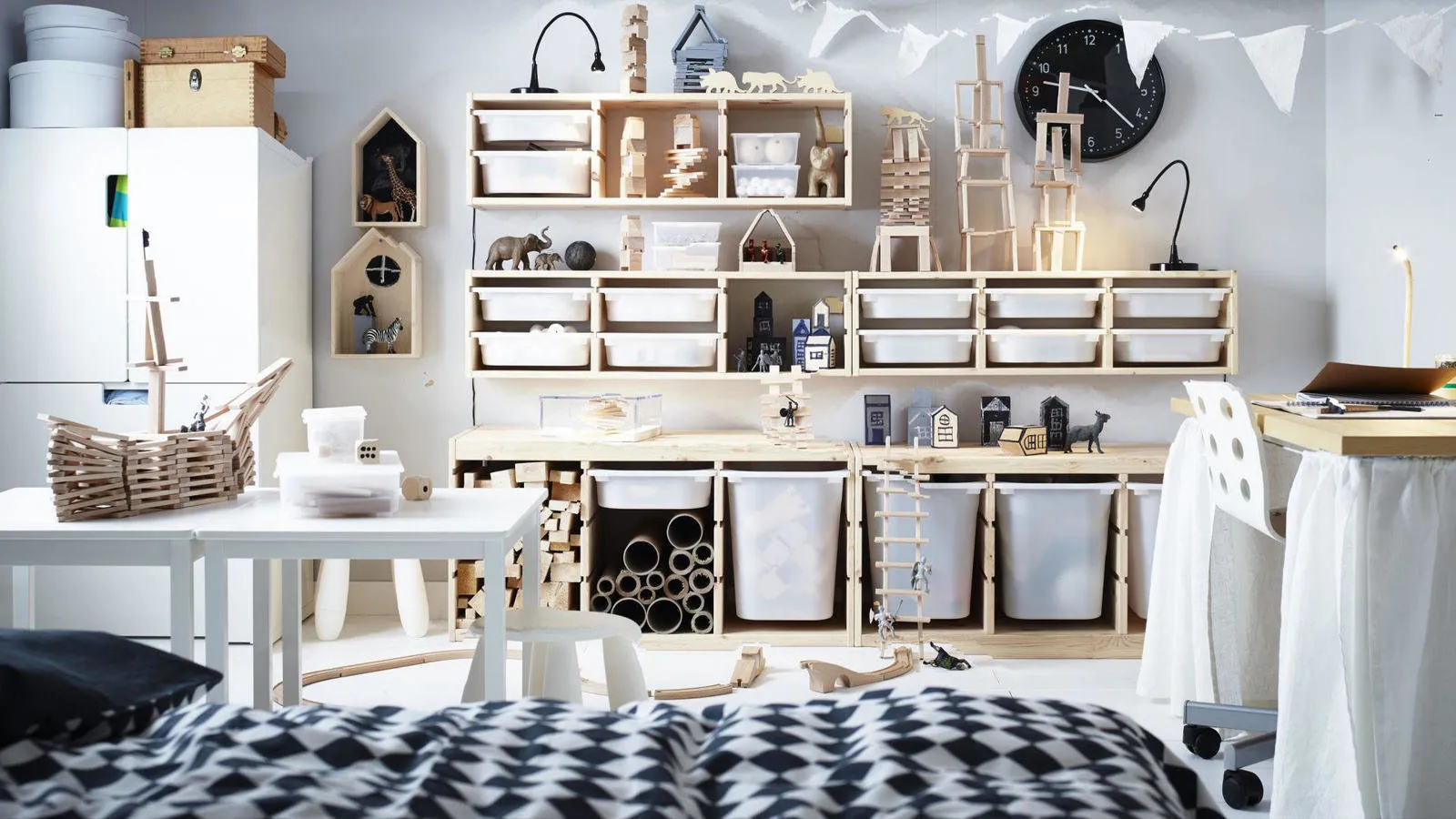
How to Organize a Study Area?
Plan how the workspace will change with the child: this saves time and money on buying new items. For example, the STUVA changing table can become a study desk for an older child, and a stool from the same series can be used as a desk for a baby or storage space (you can place baskets or drawers underneath).
Don’t forget about ergonomics: proper posture helps avoid health issues. A comfortable study chair, footrest DAGOTTO (helps reduce pressure on legs), and a desk pad SKVALLRÄDD (helps reduce pressure on the wrist while writing) — all details matter and directly influence a child's love for school and concentration.
Useful Lifehack for Smart Storage
To make every centimeter of a dresser or wardrobe useful, use inserts in drawers. Almost any IKEA storage system has organizers designed for it. For the STUVA system, there are several series — RASSLA, ANGELEGGEN, and NOYSEM. They help keep items in order at all times.
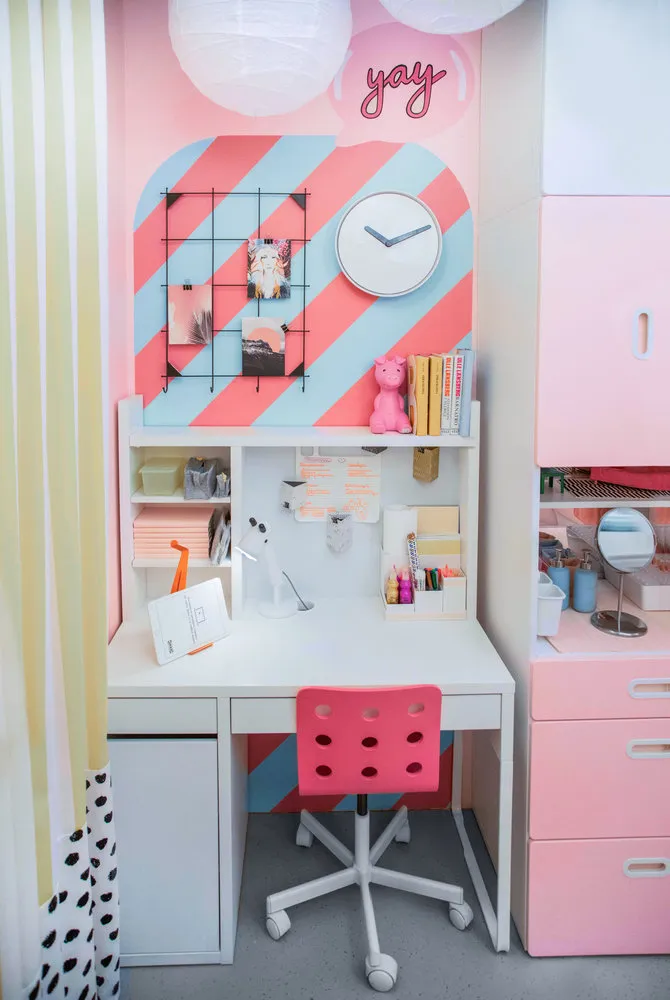
More articles:
 Redesigning a Small Stalin-era Apartment: How It Was Done
Redesigning a Small Stalin-era Apartment: How It Was Done How to Save Time on Cleaning: Tips from Professionals
How to Save Time on Cleaning: Tips from Professionals How an Old Attic Was Transformed into a Studio-Mansion for a Girl
How an Old Attic Was Transformed into a Studio-Mansion for a Girl Save to Bookmarks: A Cleaning Guide That Saves Energy
Save to Bookmarks: A Cleaning Guide That Saves Energy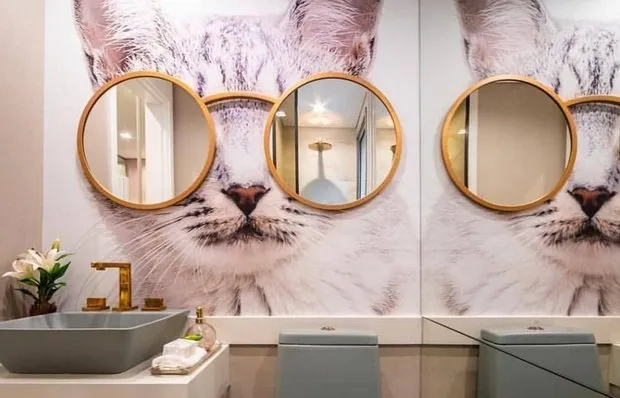 Repairing the Bathroom: 8 Design Hacks in 5 Minutes
Repairing the Bathroom: 8 Design Hacks in 5 Minutes Before and After: How We Transformed a 1940s House Without a Designer
Before and After: How We Transformed a 1940s House Without a Designer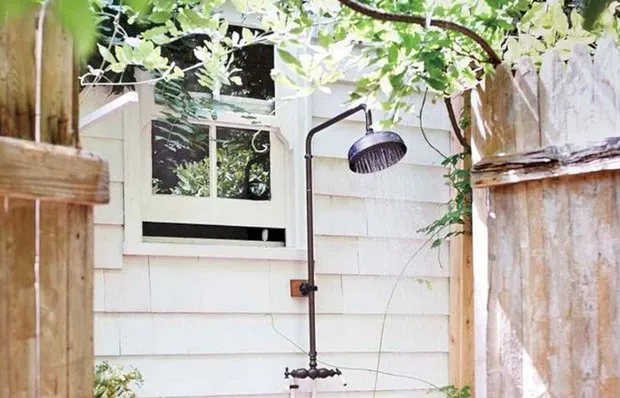 How to Set Up a Summer Shower on the Dacha: 5 Ideas
How to Set Up a Summer Shower on the Dacha: 5 Ideas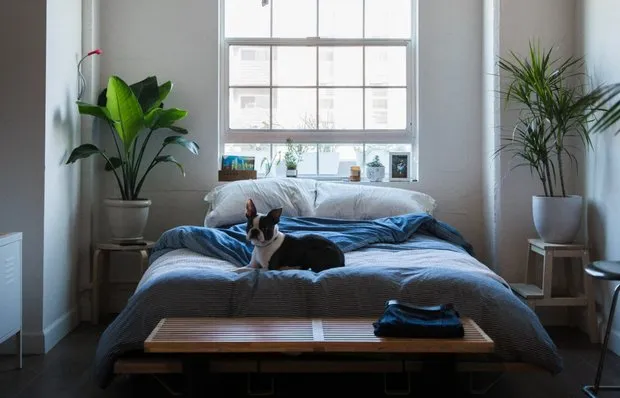 What You Need for Good Sleep: Experts' Opinions
What You Need for Good Sleep: Experts' Opinions